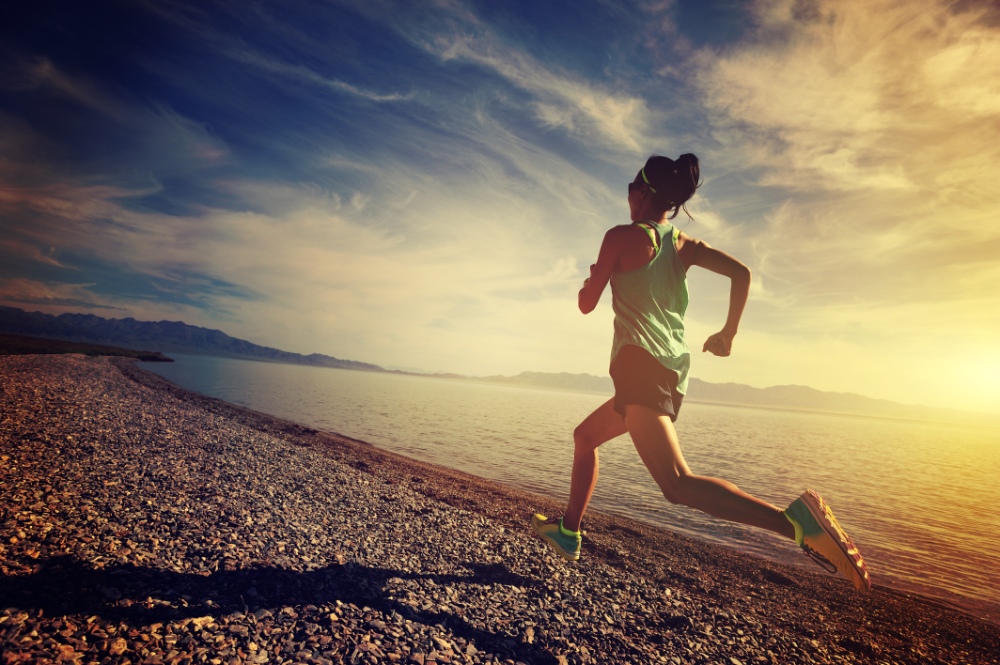How To Avoid Blisters And Black Toenails From Running
Running is a popular activity, one that is quite natural for the human body. As a species, running was absolutely essential for our early survival.
In fact, some current anthropological experts theorize that our endurance in long-distance running gave early humans an advantage when hunting animals that were faster in short durations, but tired more easily than we did.
It isn’t terribly often modern humans have to chase our next meal by food, but running is still an activity done by countless individuals across the entire globe.
Even here in Northern Nevada, we have a vibrant running community and the Tahoe Mountain Milers running club, whose members organize events and provide support for local runners.
What Causes Juvenile Bunions?
When this problem occurs so early in life, it is usually not a matter of just wearing the wrong shoes—although a pair that is too tight can certainly make the problem worse in a hurry! The underlying reason your child (more often your daughter) is likely to develop this deformity is that the ligaments in the metatarsophalangeal joint are lax. This is the joint where the big toe meets the foot, and when ligaments are too loose, the joint can move around in abnormal ways.
The problem increases if your child has flat feet or any other abnormality in his or her foot mechanics. In a perfect world, all our joints would stay lined up properly with each stride. When our gait is off, though, it can increase pressure on the side of the toe, causing it to be pushed in toward the other toes with each step. As a result, the joint moves in the opposite direction and bends out at a greater angle than normal. The bump that you see is actually the end of the foot bone (metatarsal) that attaches to the big toe bones (phalanges).
Blisters
You are probably already familiar with them, but blisters are small, fluid-filled sores that develop in the skin when one area is subjected to high friction and pressure for a certain period of time.
Physical stress from the rubbing damages the top layers of skin, which then separate from the lower layers. The space between damaged and healthy layers of skin fills with a clear fluid, creating a protective pocket so the skin can heal.
These protective bubbles can develop anywhere—and in a fairly short amount of time—on your feet where there is friction. The top culprits behind the friction is usually footwear rubbing on either the sides or tops of feet.
Of course, there are other situations and issues that can lead to blisters as well, including burns, allergic reactions, and some illnesses.
In spite of their protective nature, blisters tend to be highly sensitive to touch. Further, they can cause sharp discomfort when pressed.
It’s essential that you take care of them when they develop – so you don’t end up with an infection.
The risk for blistering increases when moisture enters the picture, like if your feet are sweating excessively due to physical activity (such as running). The dampness breaks down skin and makes it easier for layers to separate.
Shoe fit also can play a role in blisters forming.
Interestingly, footwear that is too tight or too large can both lead to this problem. In the case of excessive tightness, blisters may develop more easily on sides. Conversely, shoes that are too big enable feet to slide around inside, which generates friction.
Most blisters heal naturally in time when left alone.
As your body repairs itself by growing new skin under the vesicle, the fluid contained within the bubble is absorbed and the skin on the outside dries up and peels off. Keep in mind that a blister is actually your body’s natural barrier for preventing infections, so you should try to keep the skin intact (instead of ripping or cutting off the flap).
When dealing with a large, painful blister, one treatment method that you may choose is to cover it with a soft dressing for cushioning and protection. Be sure to change the dressing daily and wash your hands to avoid infection.
Experts are divided on the subject of popping your own blisters. If you are going to do so, take precautions by sterilizing the needle first, keeping the flap of skin attached, and using an antibiotic ointment to prevent infection.
If you are diabetic and have discovered a blister in the course of your daily foot check, do not attempt to handle it on your own. Instead, contact our office so that we can take care of it safely for you!
To prevent blisters from developing when you run:
-
Wear shoes that fit properly. This is actually the first step in preventing many different foot and ankle problems. When you cram your feet into shoes that are too tight, or drown in shoes that are too big, you put yourself at risk for blisters (and other issues). For optimal fit, make sure the heel is firmly cradled—when shoes are laced tight—and there is enough room in the front so you can wiggle your toes. If your toes are squashed together, or you can slide your foot in the laced shoe, choose a different size!
-
Wear appropriate socks. Shoes play an integral role in avoiding blisters, but so too do your choices in socks. Make sure your socks aren’t too big and fit snuggly. Also, you can help protect your feet with thick, cushioned ones.
-
Keep ‘em dry. In addition to proper fit and cushioning, you benefit from wearing shoes made out of breathable materials and socks that are moisture-wicking. Running footwear that is breathable keep feet cooler, which means less sweat is produced. You can take care of any sweat that your glands produce by sporting socks from synthetic blends that wick the moisture away!
-
Grease ‘em up. This may seem contradictory to the previous tip, but some runners apply a light layer of petroleum jelly to their feet in order to reduce friction. These runners are more likely to do so on race day, and especially if they are marathoners.
Black Toenails
So now you know about blisters, but what about black toenails?
A black toenail usually develops from bruising or bleeding underneath the nail (subungual hematoma) caused by some kind of physical trauma.
Now, that physical trauma can happen in one solitary incident, but for runners it is more frequently the result of repetitive action. Specifically, it commonly happens when toes repeatedly hit the front of running shoes during miles of training.
Runners are known to have an array of fashionable options for their footwear, but at the end of day, it is important they give greater attention to how shoes actually function. That definitely includes choosing pairs that fit well – for preventing black toenails (as well as blisters, as we’ve noted).
When you purchase a new pair, always make sure your heels are comfortably cradled in the heel area. This will assist in making sure your feet don’t slide forward in the shoes, which would enable the toes to hit the front.
In addition to a secured heel, there should also be roughly a thumb’s width between the longest toes and the front of your running shoes.
Our hope is that you are able to avoid having to deal with a blister or black toenail from your running program in the first place. Running shoes that fit properly can certainly help with that, but know that we are happy to help if you find yourself with a problematic blister or darkened toenail.
The experts here at Sierra Foot & Ankle will assess the situation, provide an accurate diagnosis, and then create a treatment plan so you receive the care you need – no matter what foot or ankle running injury you’ve sustained!
Contact us today for more information—or to request an appointment at our Carson City office—by calling (775) 783-8037. If you’d prefer, stop by our online form and connect with us right now.
Get In Touch
Address
2350 South Carson St
Suite 3
Carson City, NV 89701
Contact
Call: (775) 783-8037
Fax: (775) 782-3787
OPT-IN To Text:
By texting our office at
(775) 783-8037 from your mobile phone, you are consenting to receive SMS text messages from our staff. Reply STOP to unsubscribe.
*Read our Privacy Policy & Terms and Conditions.
Social




© Sierra Foot & Ankle. All Rights Reserved. Privacy Policy.
Web Design by CP Solutions. Marketed by VMD Services.

